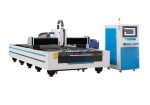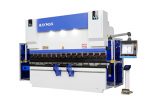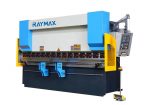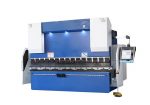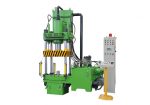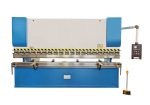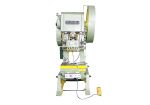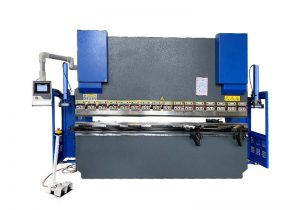What is a 10 kw laser cutting machine?
A 10 kw laser cutting machine is a machine tool that uses a laser beam to cut materials. The laser beam is generated by a laser source, which is typically a gas laser or a solid-state laser, and is focused onto the material to be cut by a system of lenses and mirrors. The laser beam is directed at the material using a computer-controlled system of galvo mirrors, which allows for precise control of the cutting path. The intensity of the laser beam is high enough to vaporize the material, which allows it to cut through a wide range of materials, including metals, plastics, and composites. 10 kw laser cutting machines are typically used in a variety of industries, including aerospace, automotive, and manufacturing, for cutting, drilling, and welding a wide range of materials.

What materials can be cut with a 10 kw laser cutting machine?
A 10 kw laser cutting machine is capable of cutting a wide range of materials, including:
Metals:
The most common materials cut with a 10 kw laser cutting machine are metals, such as steel, aluminum, brass, and copper. These materials can be cut in thicknesses ranging from a few millimeters to several centimeters, depending on the type of metal and the quality of the cut required.
Plastics:
Laser cutting machines can also be used to cut a variety of plastics, including acrylic, polycarbonate, and PVC. These materials are typically cut at lower laser power levels than metals and can be cut in thicknesses ranging from a few millimeters to several centimeters.
Composites:
Laser cutting machines can also be used to cut composite materials, such as fiberglass and carbon fiber. These materials are typically cut at lower laser power levels than metals and can be cut in thicknesses ranging from a few millimeters to several centimeters.
Wood:
Laser cutting machines can also be used to cut wood and other types of organic materials. These materials are typically cut at lower laser power levels than metals and can be cut in thicknesses ranging from a few millimeters to several centimeters.
Other materials:
Laser cutting machines can also be used to cut other materials, such as paper, cardboard, and rubber. The ability to cut these materials depends on the specific properties of the material and the quality of the cut required.
How fast can a 10 kw laser cutting machine cut?
The speed at which a 10 kw laser cutting machine can cut depends on a variety of factors, including:
- The type of material being cut: Some materials, such as metals, can be cut more quickly than others, such as plastics and composites.
- The thickness of the material: The thicker the material, the slower it will be cut.
- The quality of the cut required: Higher quality cuts, such as those with smoother edges or tighter tolerances, may require slower cutting speeds.
- The laser power: Higher laser power levels can enable faster cutting speeds, but may also result in reduced cut quality or increased material degradation.
- The laser beam focus: A smaller laser beam focus can enable faster cutting speeds, but may also result in reduced cut quality or increased material degradation.
In general, a 10 kw laser cutting machine can cut materials at speeds ranging from a few centimeters per second to several meters per second, depending on the specific factors listed above.
How accurate is a 10 kw laser cutting machine?
The accuracy of a 10 kw laser cutting machine depends on a variety of factors, including:
The quality of the laser beam:
The accuracy of the cut is largely determined by the quality of the laser beam, which is influenced by the quality of the laser source and the optics used to focus the beam.
The quality of the machine's positioning system:
The accuracy of the cut is also influenced by the quality of the machine's positioning system, which is responsible for moving the laser beam and the material being cut.
The material being cut:
Some materials, such as metals, are easier to cut accurately than others, such as plastics and composites.
The thickness of the material:
The thicker the material, the more difficult it is to achieve high levels of accuracy.
The cutting parameters:
The accuracy of the cut can also be influenced by the specific cutting parameters used, such as laser power, beam focus, and cutting speed.
In general, a 10 kw laser cutting machine is capable of achieving cutting tolerances in the range of +/- 0.1 mm to +/- 0.5 mm, depending on the specific factors listed above.
What is the maintenance process for a 10 kw laser cutting machine?
The maintenance process for a 10 kw laser cutting machine will depend on the specific model and manufacturer of the machine, as well as the operating conditions under which it is used. However, here are some general maintenance tasks that may be performed on a laser cutting machine:
Cleaning:
Laser cutting machines should be kept clean to ensure optimal performance. This may involve cleaning the machine's optics, mirrors, and other components to remove dust and debris.
Lubrication:
Some parts of the laser cutting machine may require lubrication to reduce wear and extend their lifespan.
Calibration:
The laser cutting machine's optics, mirrors, and other components may need to be calibrated periodically to ensure they are aligned correctly and operating at optimal performance.
Replacement of consumables:
Some components of the laser cutting machine, such as the laser nozzle and focus lens, will need to be replaced periodically as they wear out.
Inspection and repair:
The laser cutting machine should be inspected regularly to identify any potential problems and to ensure it is operating safely. If any problems are identified, they should be repaired by a qualified technician.
It is recommended to follow the manufacturer's maintenance schedule and procedures to ensure the laser cutting machine is properly maintained and operated safely.
What is the operating cost of a 10 kw laser cutting machine?
The operating cost of a 10 kw laser cutting machine will depend on a variety of factors, including:
The cost of electricity:
Laser cutting machines are typically power-hungry, and the cost of electricity will be a significant portion of the operating cost.
The cost of consumables:
Laser cutting machines consume consumables, such as laser nozzles and focus lenses, which will need to be replaced periodically. The cost of these consumables will be a significant portion of the operating cost.
The cost of maintenance:
Regular maintenance, including cleaning, lubrication, calibration, and repair, will be required to keep the laser cutting machine operating efficiently. The cost of this maintenance will be a significant portion of the operating cost.
The cost of labor:
Operating a laser cutting machine typically requires skilled labor, which may be a significant portion of the operating cost.
It is difficult to provide a precise estimate of the operating cost of a 10 kw laser cutting machine without more information on the specific machine and operating conditions. However, it is likely that the operating cost of a laser cutting machine will be higher than other types of cutting machines, such as mechanical cutting machines, due to the higher energy and consumables costs.
How much space is required for a 10 kw laser cutting machine?
The amount of space required for a 10kw laser cutting machine will depend on the specific model and manufacturer of the machine, as well as the materials and thicknesses it is designed to cut. In general, laser cutting machines are relatively large and require a significant amount of space, particularly if they are equipped with a large worktable or material handling system.
A 10 kw laser cutting machine may require a floor space of several square meters, depending on the specific model and configuration. In addition to the floor space, the laser cutting machine will also require a certain amount of overhead space to allow the laser beam and material handling system to move freely. It is recommended to consult the manufacturer's specifications for the specific space requirements of the laser cutting machine.
What safety precautions should be taken when using a 10 kw laser cutting machine?
Laser cutting machines can be dangerous if they are not used properly, and it is important to take the following safety precautions when using a 10 kw laser cutting machine:
- Wear protective equipment: It is important to wear protective equipment, such as goggles, gloves, and hearing protection, when operating a laser cutting machine.
- Keep the work area clean: The work area should be kept clean and free of clutter to prevent accidents.
- Follow proper start-up and shutdown procedures: The laser cutting machine should be started up and shut down according to the manufacturer's instructions to ensure it is operating safely.
- Do not look directly at the laser beam: The laser beam is extremely hazardous to the eyes and should not be viewed directly.
- Do not touch the laser beam or the material being cut: The laser beam and the material being cut can both be extremely hot and can cause burns.
- Follow proper maintenance procedures: The laser cutting machine should be maintained according to the manufacturer's instructions to ensure it is operating safely.
- Follow proper emergency procedures: It is important to know the proper emergency procedures in case of an accident or malfunction.
It is recommended to consult the manufacturer's safety instructions and to receive proper training before operating a laser cutting machine.
What types of industries use 10 kw laser cutting machines?
10 kw laser cutting machines are used in a wide variety of industries, including:
Aerospace:
Laser cutting machines are used in the aerospace industry to cut a variety of materials, including metals, composites, and plastics, for the production of aircraft and spacecraft components.
Automotive:
Laser cutting machines are used in the automotive industry to cut a variety of materials, including metals, for the production of car and truck components.
Manufacturing:
Laser cutting machines are used in manufacturing for the production of a wide range of products, including electronics, appliances, and machinery.
Construction:
Laser cutting machines are used in the construction industry to cut a variety of materials, including metals, for the production of building components.
Medical:
Laser cutting machines are used in the medical industry to cut a variety of materials, including metals and plastics, for the production of medical devices.
Signage:
Laser cutting machines are used in the signage industry to cut a variety of materials, including metals and plastics, for the production of signs and displays.
Jewelry:
Laser cutting machines are used in the jewelry industry to cut a variety of materials, including metals, for the production of jewelry.
Art:
Laser cutting machines are used in the art industry to cut a variety of materials, including metals, woods, and plastics, for the production of artistic works.
Research:
Laser cutting machines are used in research institutions for a variety of applications, including materials research, biology, and physics.
Other:
Laser cutting machines are used in a wide variety of other industries, including the food and beverage industry, the woodworking industry, and the textiles industry.
How does a 10 kw laser cutting machine compare to other laser cutting machines in terms of performance and cost?
Laser cutting machines are available in a wide range of sizes and power levels, with 10 kw machines being on the higher end of the scale. Compared to smaller laser cutting machines, a 10 kw machine will generally be able to cut thicker materials and achieve higher cutting speeds. However, it will also be larger and more expensive to purchase and operate.
In terms of performance, a 10 kw laser cutting machine will generally be able to cut a wider range of materials and achieve higher cutting speeds than smaller laser cutting machines. It will also be able to cut thicker materials and achieve higher levels of accuracy.
In terms of cost, a 10 kw laser cutting machine will generally be more expensive to purchase than smaller laser cutting machines. It will also have higher operating costs due to the higher power consumption and the need for more frequent consumable replacement. However, the higher performance of the 10 kw laser cutting machine may justify the higher cost in some cases, particularly for applications that require faster cutting speeds or the ability to cut thicker materials.
Can a 10 kw laser cutting machine be integrated into an automated production line?
Yes, a 10 kW laser cutting machine can be integrated into an automated production line. Laser cutting machines are highly flexible and can be integrated into a wide range of production systems, including conveyor-based systems, robotics-based systems, and more.
There are several ways in which a 10 kw laser cutting machine can be integrated into an automated production line:
Material handling:
The laser cutting machine can be integrated with a material handling system, such as a conveyor or a robot, to automatically feed the material to be cut into the machine and remove the finished parts.
Process control:
The laser cutting machine can be integrated with a process control system, such as a computer numerical control (CNC) system, to automatically control the cutting process and ensure consistent results.
Data integration:
The laser cutting machine can be integrated with a data management system to track production data and monitor machine performance.
Quality control:
The laser cutting machine can be integrated with a quality control system, such as a vision system, to automatically inspect the finished parts for defects.
By integrating a 10 kw laser cutting machine into an automated production line, it is possible to achieve higher levels of efficiency, accuracy, and consistency in the production process.


